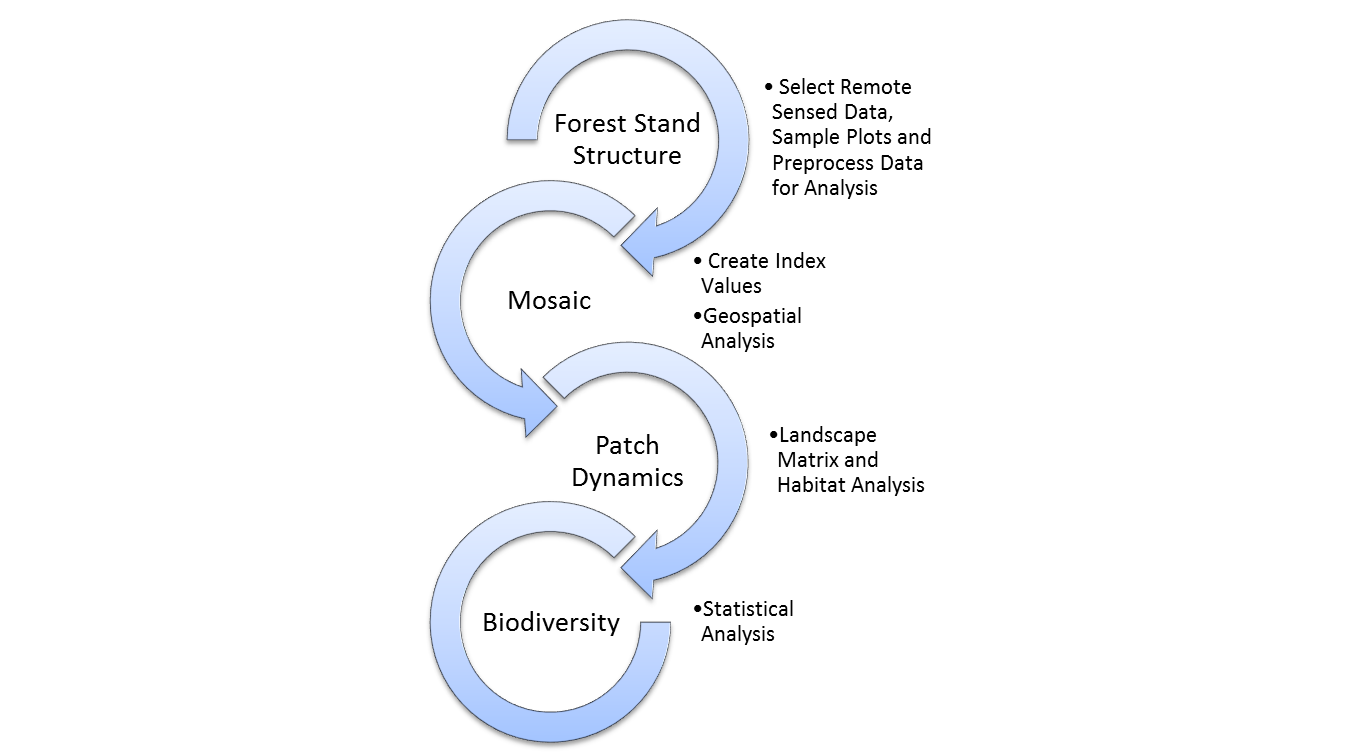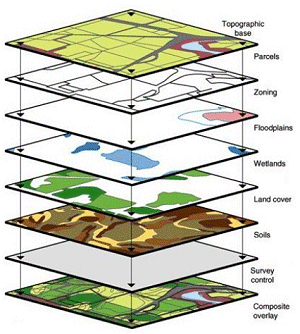Methods
Summary
This is a two year project that proposes to use remotely sensed data to predict biodiversity over a forest landscape. The initial idea suggested that if a LiDAR point-cloud analysis algorithm could be written to extend current IDL forest analysis metrics, similar methods could be used to index seral values to raster data for advanced GIS modeling.
 Currently we are defining the forest stand structure filed data protocols, but there are also biodiversity data protocols, as well as data analysis methods to develop. The analysis of GIS through an overlay is a fairly well understood component of this process, generally, but our specific process has not been decided upon. It was originally proposed as an overlay analysis that would involve R, both in the computation of spatially explicit biodiversity values from field data, and then in the raster mosaic.
Currently we are defining the forest stand structure filed data protocols, but there are also biodiversity data protocols, as well as data analysis methods to develop. The analysis of GIS through an overlay is a fairly well understood component of this process, generally, but our specific process has not been decided upon. It was originally proposed as an overlay analysis that would involve R, both in the computation of spatially explicit biodiversity values from field data, and then in the raster mosaic.

Challenges
The IDL programming language and ENVI software we have selected is complex and some of the best minds in the earth sciences use it. Will it be flexible enough to complete our desired point cloud data analysis and will the results be useful for montane forests based on the plant communities we are analyzing? Our data is of high quality, but better types of LiDAR imagery are available. Will we ultimately need Geiger mode for our type of analysis work? The more I learn the clearer it becomes that this is the only real project risk in terms of time and limited alternatives.
Pre Analysis Plan
Once we have acceptable structure values and a reasonable set of biodiversity values, the MONOVA analysis may take place in ESRI ArcGIS or though some external system such as R Studio. This is an open issue and will be addressed with the next six months time. Our findings will relate to various scenarios we were able to evaluate based on several permutations of independent variables, structure and microclimate, and the varied biodiversity measures which are dependent. Methods and protocols will be addressed in lab notes accordingly as filedwork is completed and data preprocessing and analysis begins.
Protocols
Browse the protocols that are part of the experimental methods.